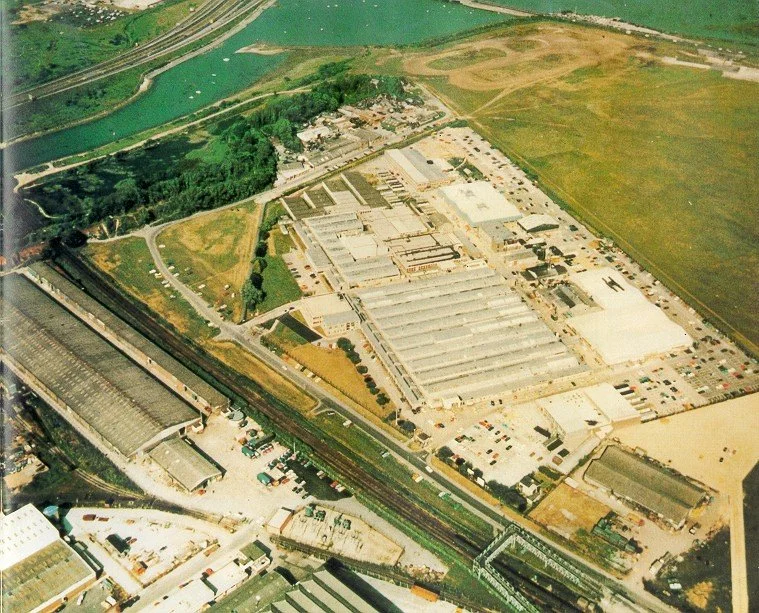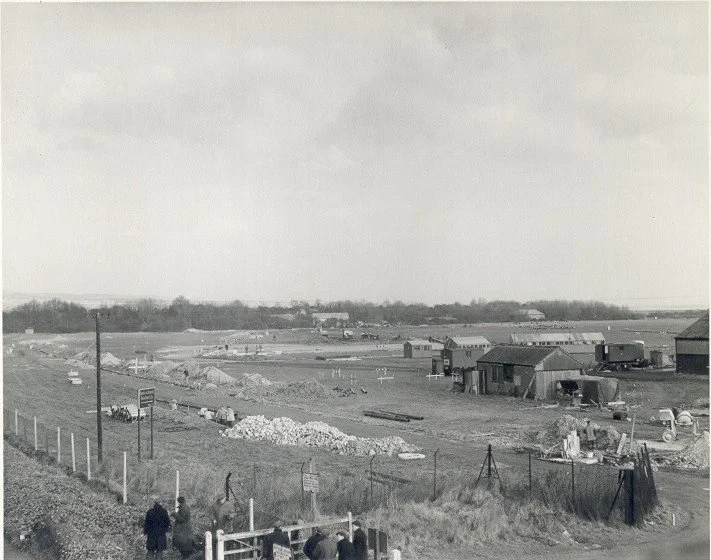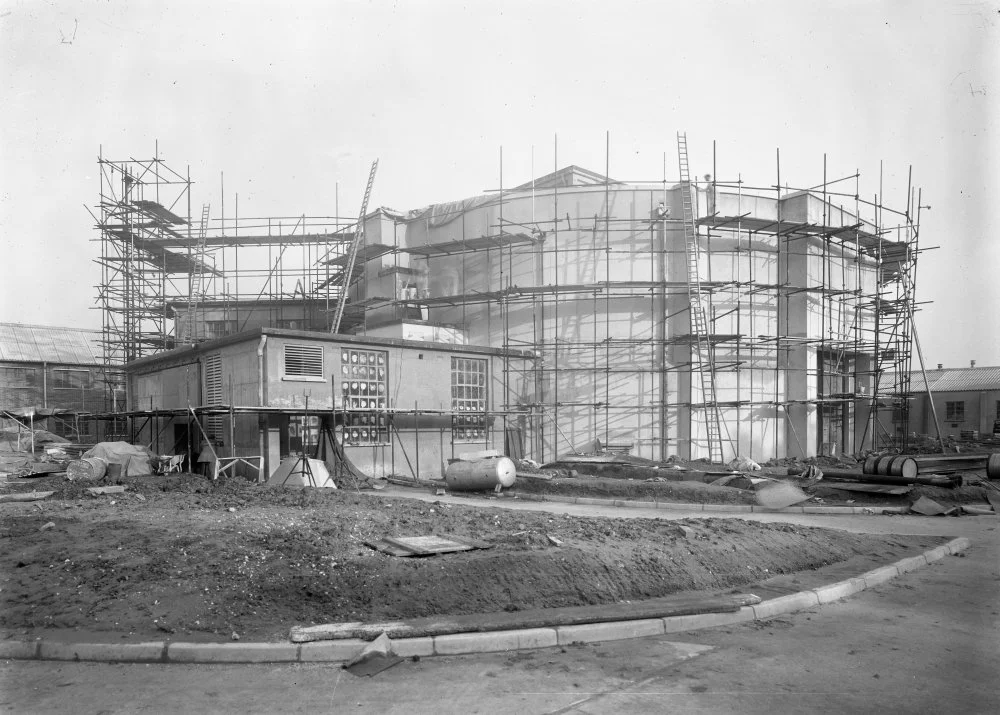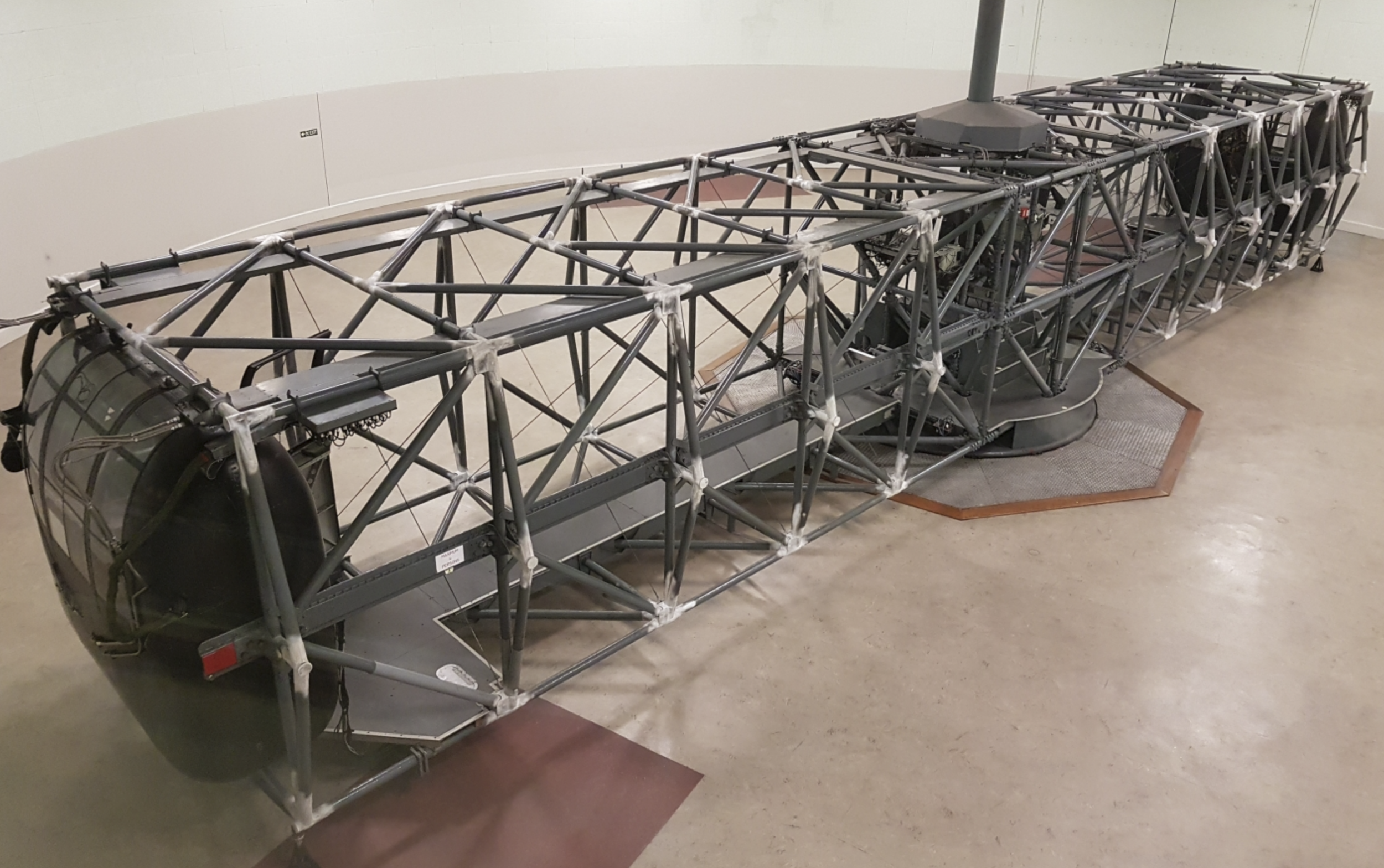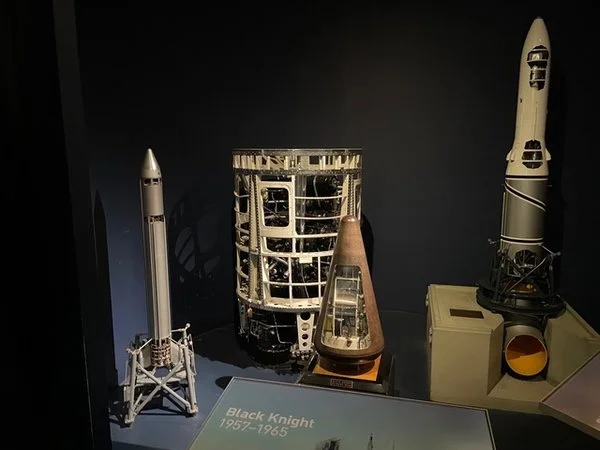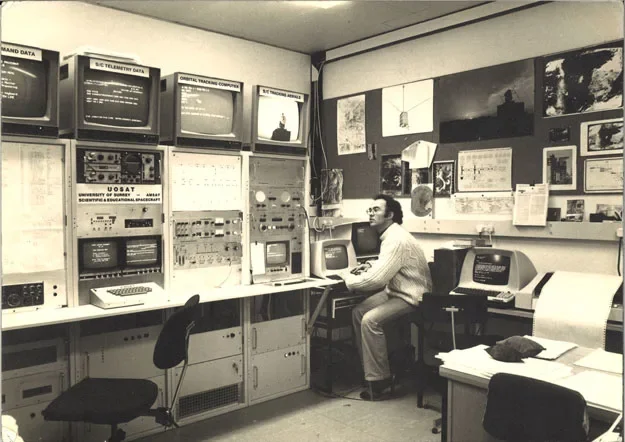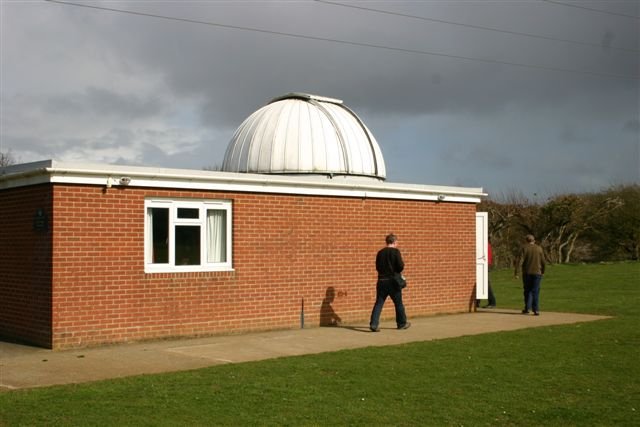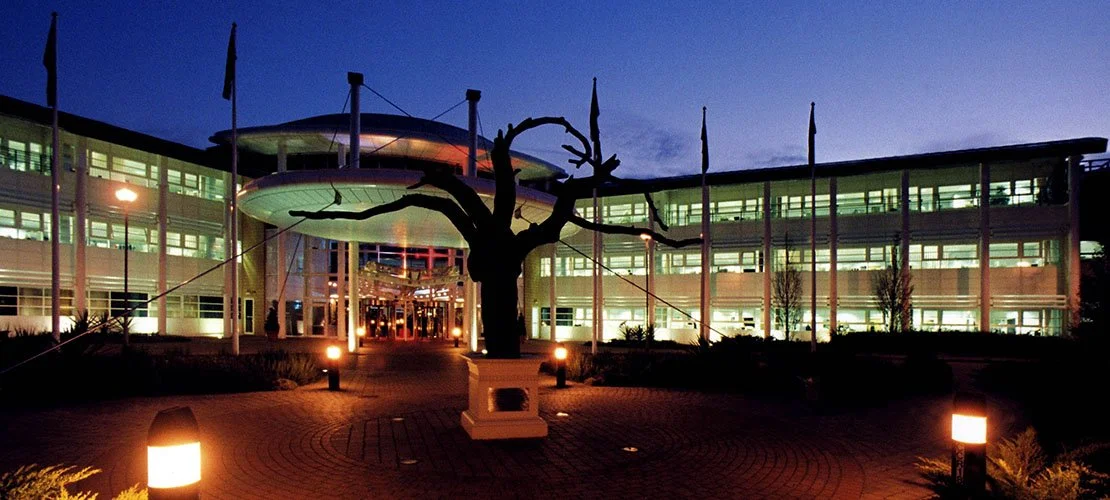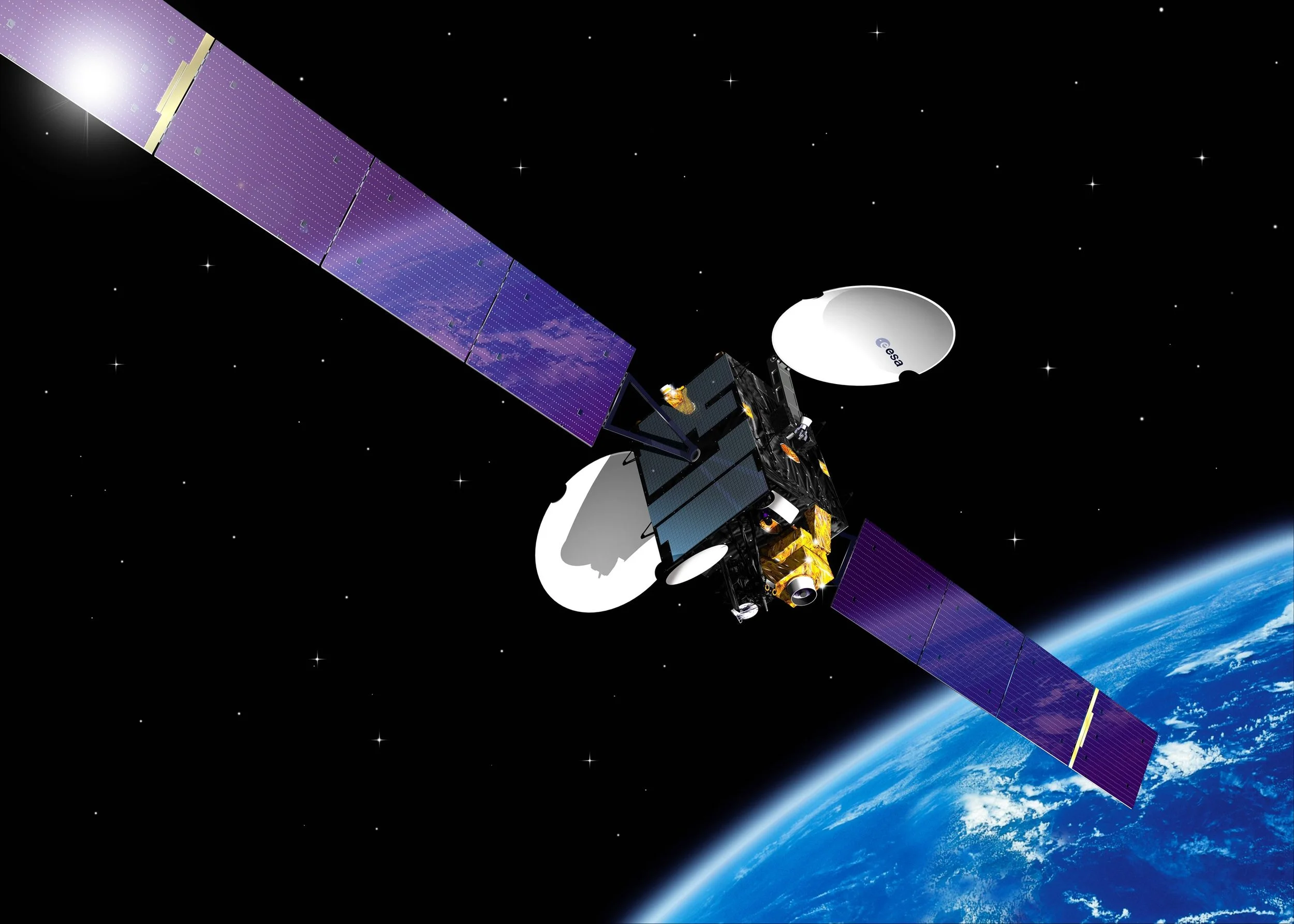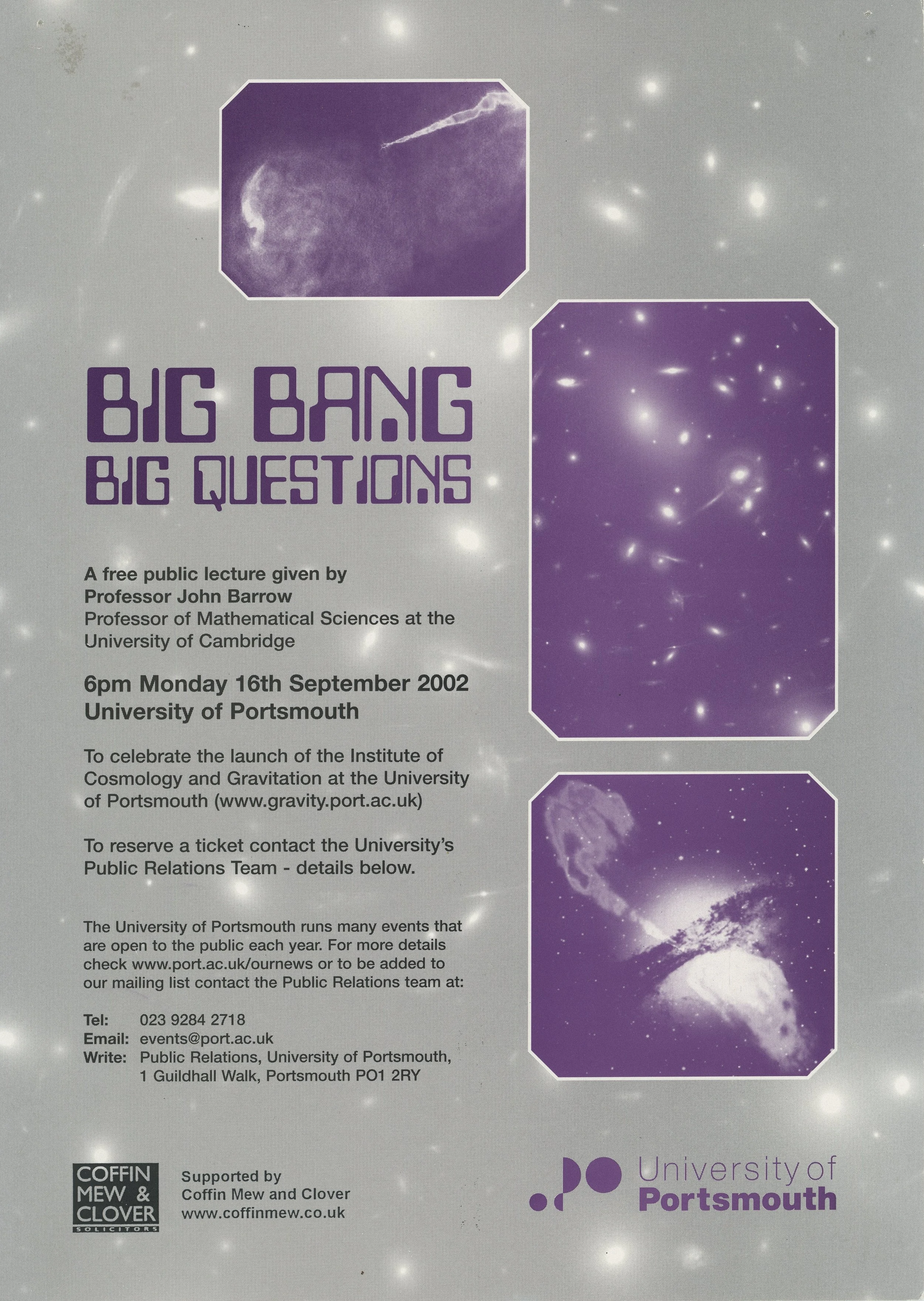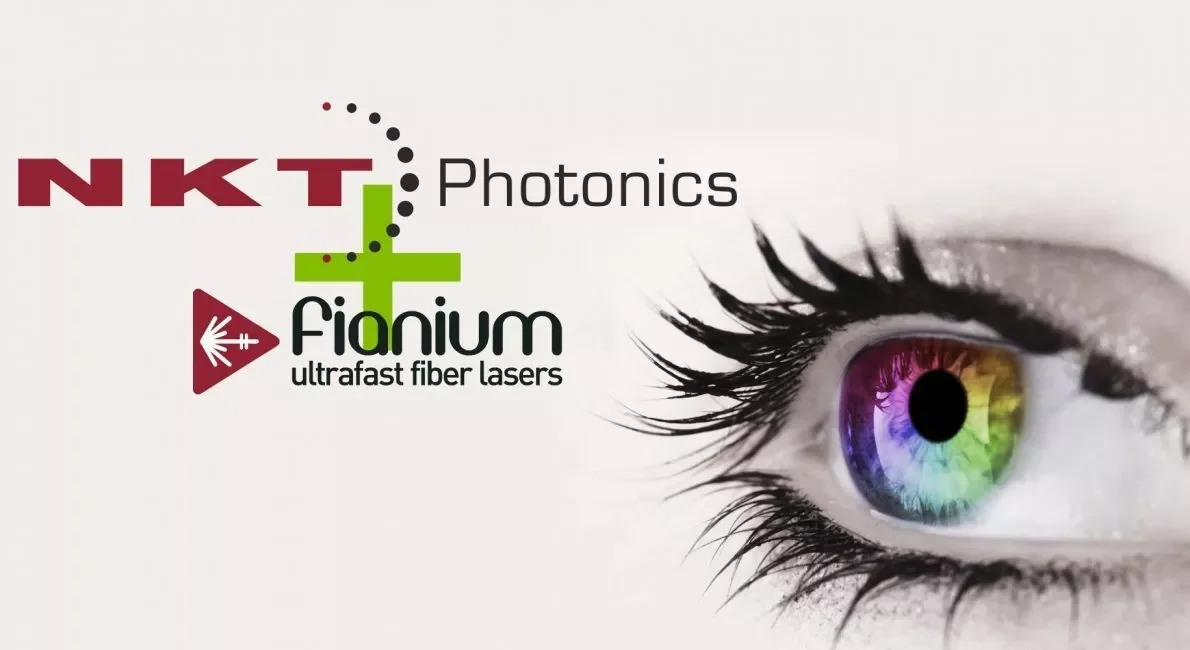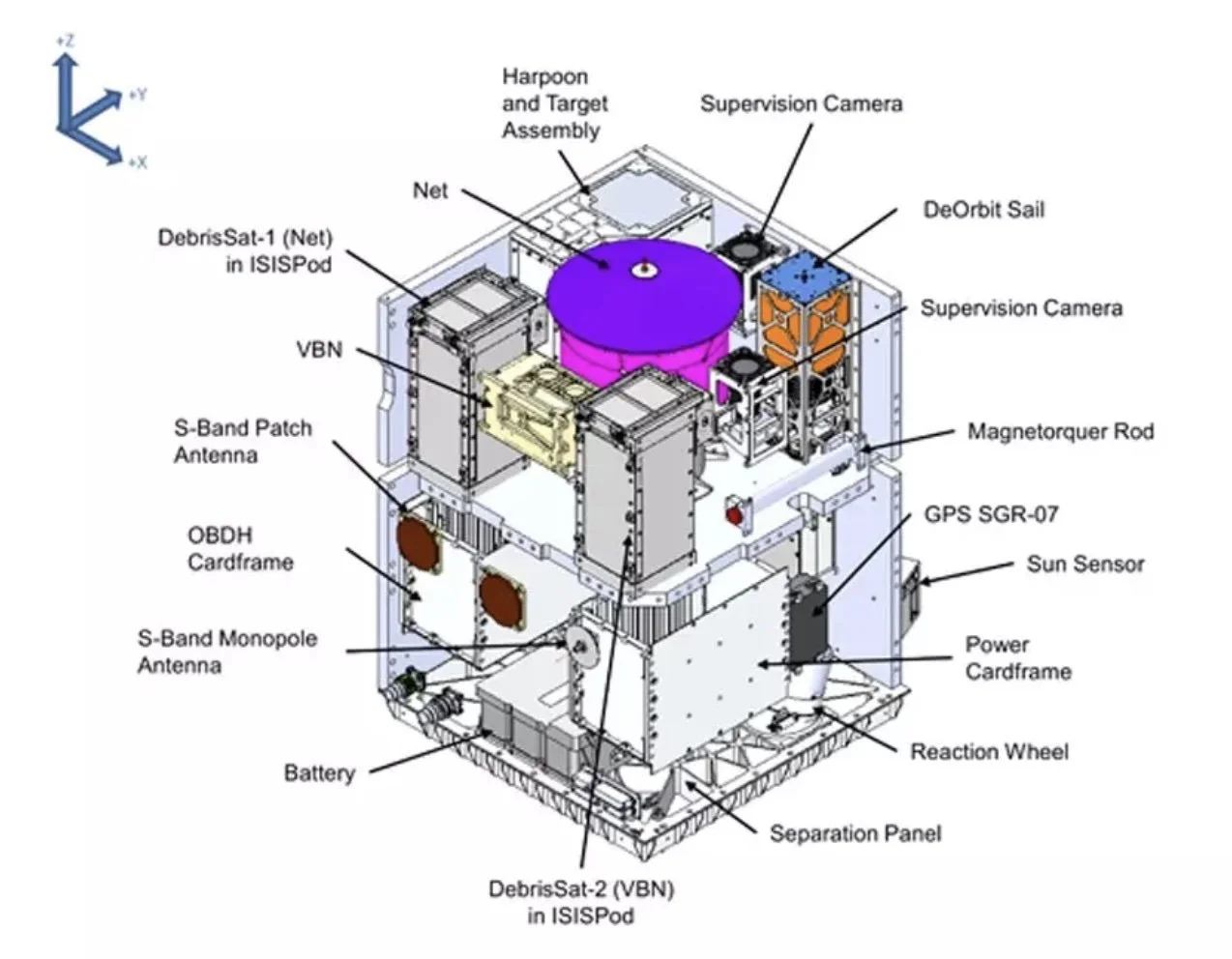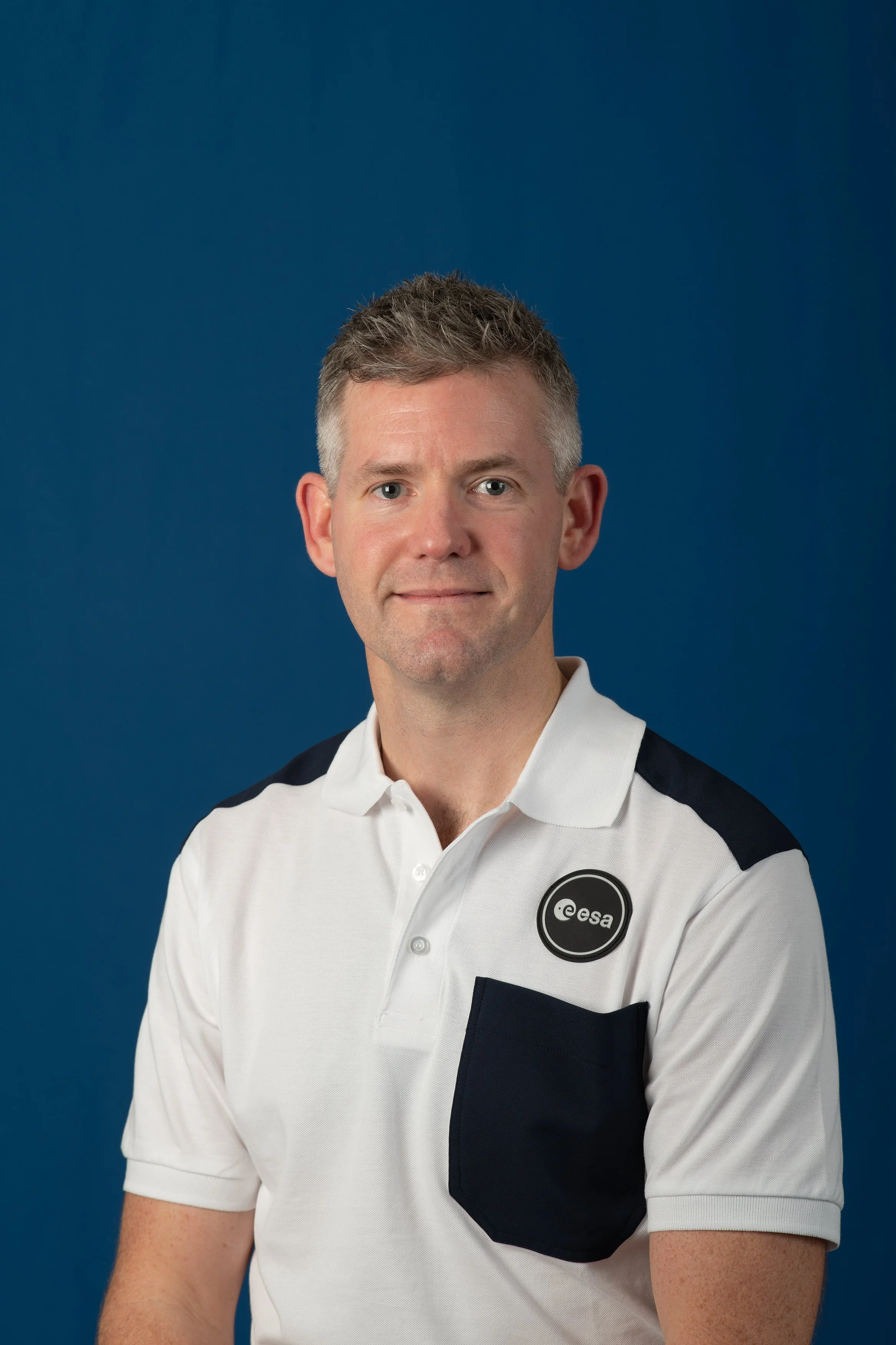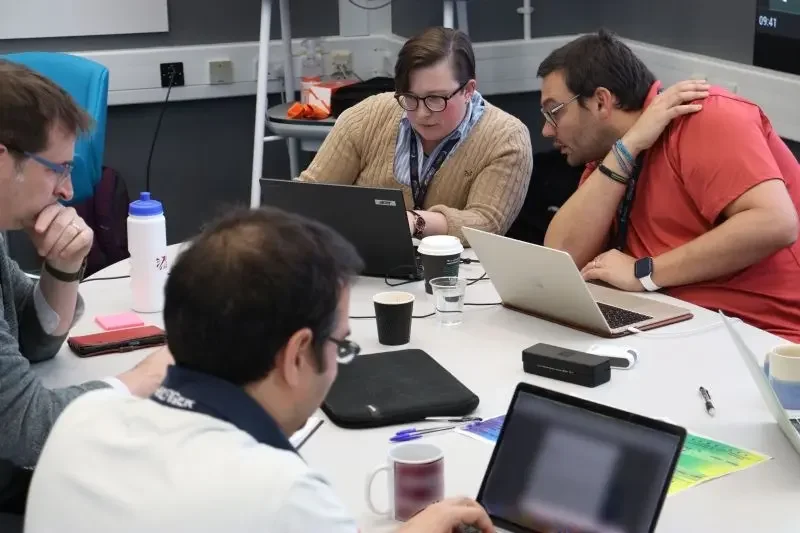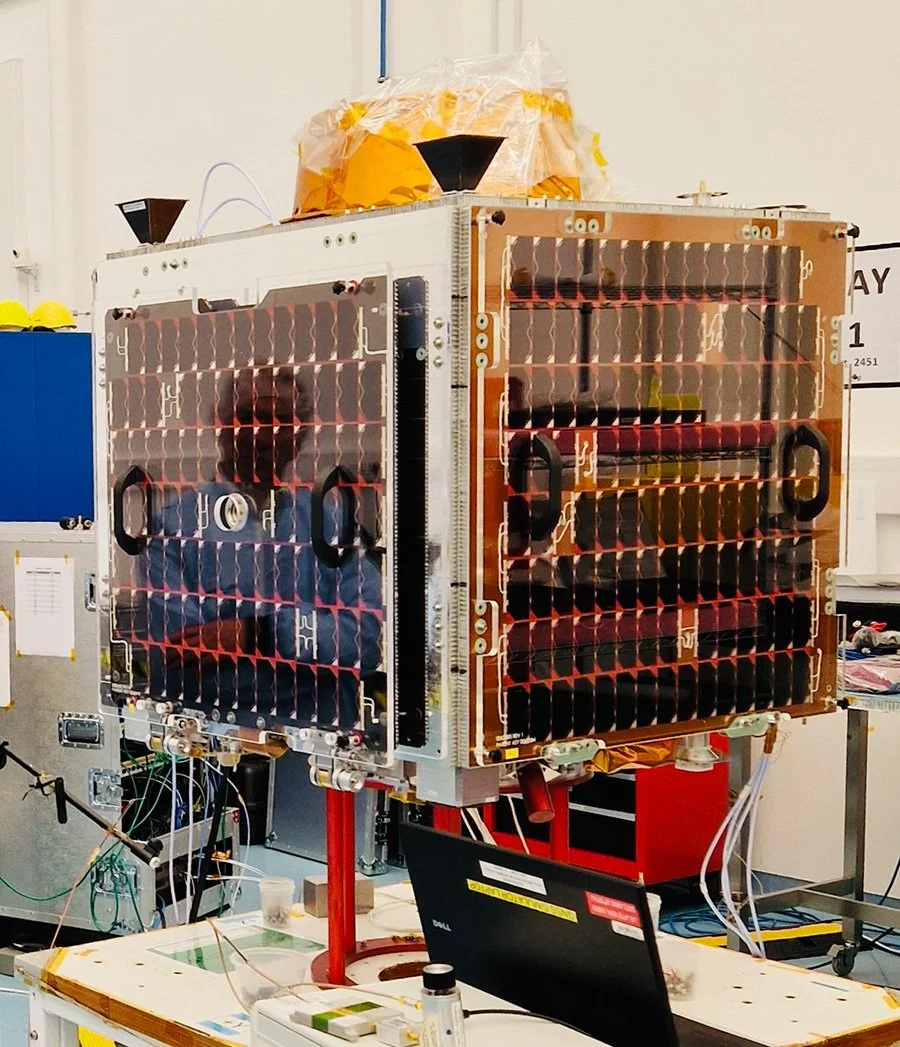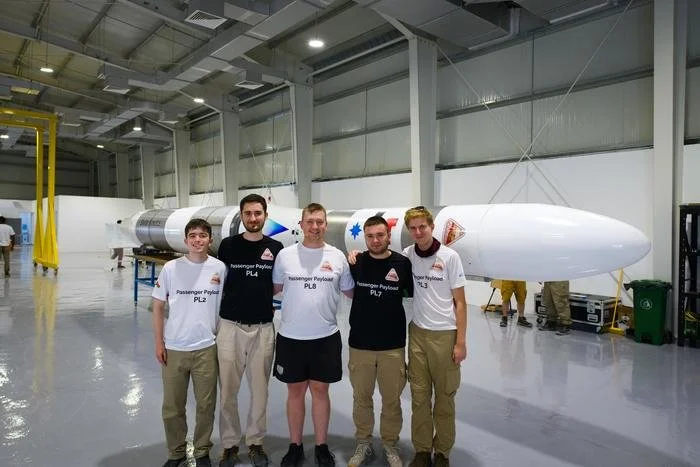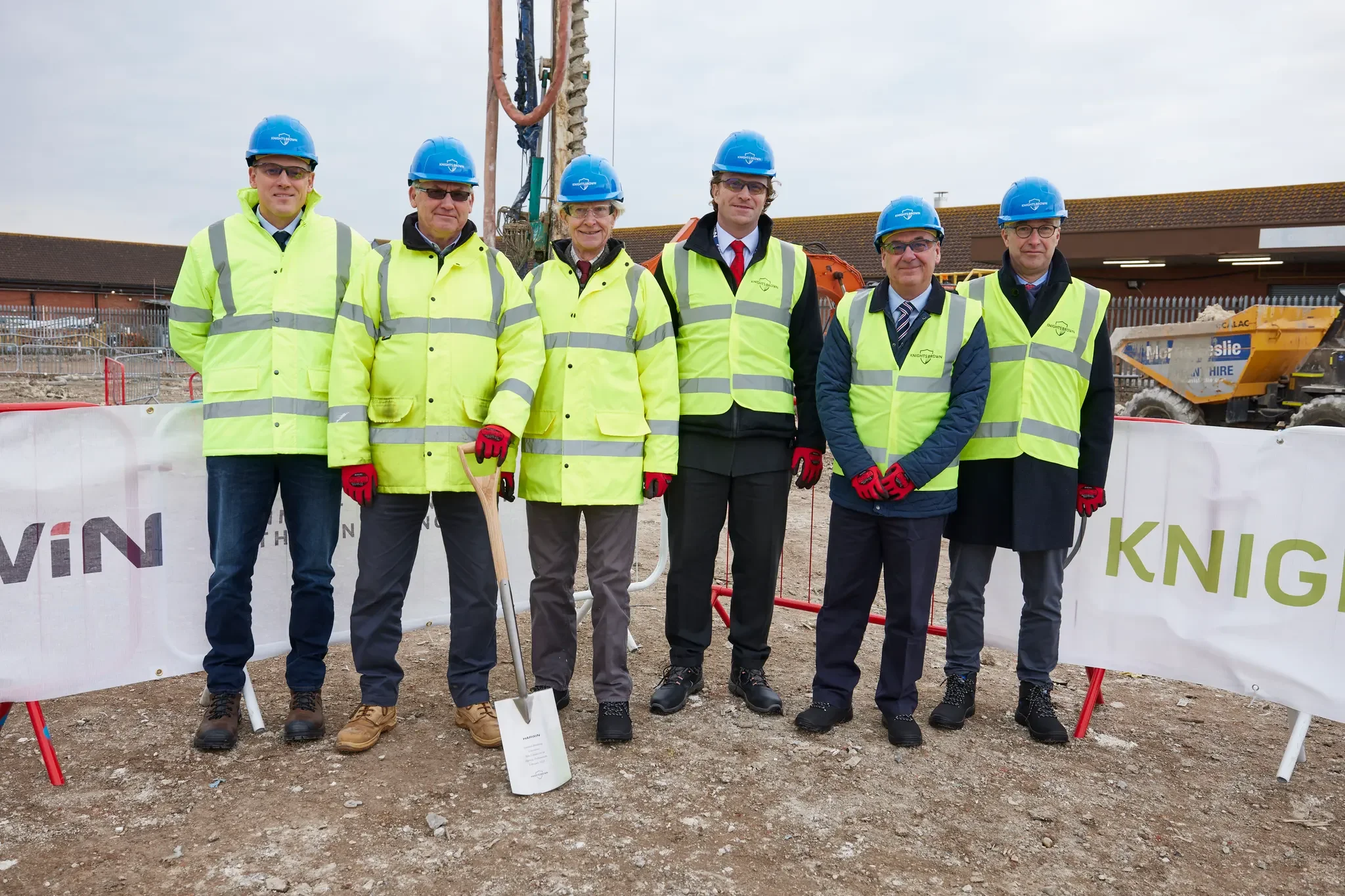For seven decades, the Space South Central region has been at the forefront of space innovation and technology. Between 1955 and 2025, the area built upon its existing expertise in science, aviation, maritime and defence to evolve the thriving, end-to-end space industry we have now, comprising more than 200 companies and four world-class partner universities: UCL, the University of Portsmouth, University of Southampton and University of Surrey.
This interactive timeline celebrates 70 years of space innovation across Hampshire, Surrey and the Isle of Wight, from the start of the Black Knight rocket programme in 1955 to today, and a regional space sector worth an estimated £3 billion annually, and which employs around 14,000 people.
1955
Isle of Wight company starts work on Black Knight
Saunders Roe, an Isle of Wight aerospace and marine engineering company, is awarded the contract to develop Black Knight – the UK's first substantial liquid-fuelled ballistic rocket – by the UK Government.
The Government wanted to develop the UK’s rocketry experience as part of expensive and ambitious plans to develop a large ballistic missile, Blue Streak. The Black Knight project would grow expertise in fields such as guidance, instrumentation, steering using gimballed engines, and general hands-on experience.
Working with the Royal Aircraft Establishment (RAE) in Farnborough, Hampshire, and the Rocket Propulsion Department (RPD) at Westcott, Buckinghamshire, Saunders Roe’s facilities in East Cowes became important sites for the development and ground testing of the Black Knight, with more than 20 iterations built on the Isle of Wight.
Between 1958 and 1965, a total of 22 Black Knight rockets were launched, and inspired future projects Black Arrow and Black Prince.
While ultimately discontinued (the Treasury ceased funding in the 60s), the Black Knight programme demonstrated the technical capabilities of British aerospace engineering and laid the groundwork for future space endeavours.
GEC establishes electronics factory at Broad Oak, Portsmouth
Situated by Portsmouth Airfield, which operated as an airport between 1931 and 1973, Broad Oak went on to be home to many big names in aerospace through mergers, acquisitions and various company name changes. The site was later home to Marconi Space and Defence Systems (also known as GEC Marconi), after GEC acquired English Electric and its subsidiaries in 1968, then Marconi Space Systems, Matra Marconi Space, EADS Astrium and Astrium, which became Airbus Defence & Space in 2014. Today, Airbus Defence & Space and BAE Systems and have bases at Broad Oak.
Marconis links to the Space South Central region go back to the 1890s, when Guglielmo Marconi conducted wireless experiments on the Isle of Wight. He set up equipment at the Royal Needles Hotel in Alum Bay and successfully communicated with ferry boats and the mainland. These early experiments were crucial in demonstrating the potential of wireless communication.
Farnborough Centrifuge makes safe high-G force testing possible
Opened in 1955, at the Royal Air Force Institute of Aviation Medicine (RAF IAM), the Farnborough Centrifuge was the first machine in Britain that was able to test human subjects and their equipment under the effects of high-G flight, without exposing them to the potentially fatal risk of actual test flights.
Construction took place between 1951 and 1955 at a total cost of £350,000. The first centrifuge run took place on 18 April 1955 and the facility was formally opened by Lord Thurso on 17 May 1955.
Operating from 1955 to 2019, Farnborough Centrifuge (or the Farnborough Man-Carrying Centrifuge to use its official name) proved to be a critical asset for the UK space and defence industries and was also used by international organisations such as NASA.
Largely unchanged since the 1950s, it may be the oldest operational human centrifuge in the world: its longevity is testament to the standard of British engineering at the time. In recognition of its historical and technological importance, the Farnborough Centrifuge was awarded Grade II listed status in 2007 and received the Engineering Heritage Award in 2022, joining other icons of British engineering such as the Thames Barrier and Concorde.
Credit: farnboroughcentrifuge.org.uk
1956
Skylark gets the go-ahead
Working towards its goal of the Blue Streak missile, the UK Government agreed to fund a proposal from RAE, Farnborough, to develop a ‘sounding rocket’. A sub-orbital precursor to satellites and their launch vehicles, the brief was that the sounding rocket be “easy to manufacture, prepare and fire, and the total cost should be kept as low as possible.”
The result was Skylark, iterations of which would see hundreds of launches over the next 48 years and pioneering astronomical observations.
Space South Central academic partner, UCL, was involved with the project from the outset. Sir Harrie Massey, then head of the university’s Physics department, and Sir Robert Boyd CBE, a lecturer carrying out experimental research, were already keen to explore how rockets could be used to facilitate experiments. Massey was Chair of the Royal Society’s Gassiot Committee, which had been tasked with organising research on atmospheric physics and meteorology.
When the RAE’s funding to develop a rocket was confirmed, Massey formed the Rocket Subcommittee to develop a research programme, and with Boyd, made plans for an official space research group at UCL.
1957
Black Knight’s first test run at top secret Isle of Wight site
The first test run of Black Knight was performed at the new High Down Test Site on the Isle of Wight. High Down, near The Needles, was built and operated in secret and was later used in tests for Black Arrow.
When the British Government cut funding for the nation’s space programme in 1971, it spelt the end of rocket testing at High Down. However, the National Trust took over the site in 1975, and you can still visit.
Skylark becomes the first British rocket to reach space
On 13 November 1957, Skylark launched from Woomera, a large Anglo-Australian experimental weapons range in South Australia. A sounding rocket, it didn’t have the capability to go on long missions in space, but it did become the first British rocket to reach space.
The first Skylark launch carried RAE test instruments monitoring performance, but by the fourth launch later that day, Skylark was being used for experiments by three British universities. These included Space South Central partner UCL, its first experiment being to measure atmospheric temperature, density and wind speed using grenades. The university would go on to use Skylark rockets for pioneering research in the years to come.
Skylark went on to enable around 441 launches, its final one being in 2005, making it one of the world’s longest-running rocket programmes, helping our understanding of solar physics and atmospheric dynamics.
Footage: The firing of Skylark at Woomera, Australia, 1957 Credit: Farnborough Air Sciences Trust (FAST) archive
1958
The first Black Knight rocket successfully launched in Woomera: a first of its kind for Britain and another step towards British satellite launch capacity.
The engine ran a fuel comprising a combination of high-test peroxide (HTP) and kerosene; Saunders-Roe possessed prior experience of working with this fuel mixture as a result of the firm's work on the Saunders-Roe SR.53 rocket propelled interceptor aircraft.[17]
The technology and knowledge gained from the Black Knight programme played a key role in the subsequent development of the Black Arrow programme.
First Black Knight launch in Australia
1960s
NASA and US military develop spacesuits with Farnborough Centrifuge and RAE
During the 1960s, NASA, the US Airforce and US Navy joined forces with Farnborough Centrifuge and the RAE in Farnborough for the High-Altitude Flight & Spacesuit Programme.
This collaboration pioneered the design of space suits to protect astronauts from the many challenges of space travel and led to the development of water-coolant suits, which NASA later adopted for the Apollo missions.
1961
UK government sets up a dedicated Space Department
Following the rapid developments of the 1950s, Britain – and indeed the world’s – enthusiasm for space continued to gather momentum and the government established a Space Department in 1961. The new Department comprised specialist divisions covering satellite launching vehicles, satellite engineering, ballistics research, instrumentation research and dynamics.
Collaboration had been important from the outset, as it is today, and the Space Department actively engaged with organisations such as the European Space Research Organisation (ESRO), the European Launcher Development Organisation (ELDO) and the International Telecommunications Satellite Organisation (INTELSAT).
1962
Ariel-1: the UK becomes the world’s third space-faring nation
When British-American satellite, Ariel-1, launched from Cape Canaveral in April 1962, it became the first international satellite, and made the UK the third country to operate a satellite after the USA and the Soviet Union. The third satellite in the Ariel series was the first to be designed and built wholly in the UK.
The RAE team led the project UK, which brought together several prestigious British academic institutions in a groundbreaking international collaboration that would set the course for Britain’s future in space.
The satellite carried six experiments designed and built by British universities, four of which were from Space South Central academic partner, UCL. The university’s main aim was to expand knowledge of the ionosphere and of sun-ionosphere relationships and Ariel-1 made the first spectroscopic X-ray observations of solar flares. Firmly establishing itself at the forefront of early space research, it was just four years later that UCL founded the Mullard Space Science Laboratory in Surrey, the first university facility of its kind in Britain.
Estimated as a one-year mission, Ariel-1 remained in orbit until 1976 – nearly nine years longer than planned – providing additional data and experience that benefited subsequent missions. A total of six satellites were launched as part of the Ariel programme, and the third in the series was the first to be wholly designed and constructed in the UK.
Image credit: Ariel-1 making the first spectroscopic X-ray observations of solar flares. Credit: UCL
1964
Black Arrow rocket gets the go-ahead
Building on the success of Black Knight, Black Arrow originated from an RAE proposal for the government to fund development of a rocket capable of placing a 317-pound (144 kg) payload into low Earth orbit to test systems designed for larger spacecraft.
The programme was authorised by Conservative Aviation Minister Julian Amery in 1964 and Black Arrow was built and tested on the Isle of Wight by Saunders Roe (which merged into Westland Aircraft that year), with a Bristol Siddeley rocket engine.
Like Black Knight, Black Arrow was tested at High Down, Isle of Wight.
1965
The final Black Knight launch
The last Black Knight rocket launch in Woomera, Australia, also brought to an end the joint UK/USA/Australia programmes Dazzle and Gaslight, which successfully used Black Knight to study re-entry phenomena and re-entry head design. Further projects were considered, but it was decided that Black Knight did not have enough speed for the experiments planned.
Image: Black Knight exhibit at the Science Museum, London. L to R scale model, engine section, re-entry test body. Credit: Trevor Williams
1966
UCL’s opens one of the UK’s first university space science departments
UCL was one of the first universities in the world to become involved in making scientific observations in space, and in 1966 it opened its Mullard Space Science Laboratory (MSSL) near Dorking, Surrey.
MSSL is now the UK's largest university space research group and a world-leader in space research and engineering, participating in more than 35 satellite missions and over 200 rocket experiments.
It offers state-of-the-art test facilities for ground and space-based technology and the rare on-site capability to design, build and test instruments and spacecraft systems. MSSL’s research covers all aspects of space, from understanding the Sun and its interaction with planets, to galaxies and the matter that makes up the universe.
Hampshire’s RAF Oakhanger becomes nerve centre for military satellite communications
RAF Oakhanger, near Bordon, Hampshire, has played an important role in military communications since 1966, now supporting the Skynet 5 constellation and the United States Space Force's Satellite Control Network.
The site was managed by the Royal Air Force until 2003 when it was taken over by Paradigm Secure Communications, followed by Airbus Defence and Space (2013 – 2024) and Babcock International (2024 – present).
1967
Chilbolton Observatory opens
Chilbolton Observatory opens, eventually becoming a UK hub of meteorological measurements, radio astronomy and satellite tracking, known by researchers around the world. The 25m dish supported pioneering radio astronomy work in the 1960s and 1970s before being used primarily for meteorological studies which it continues to be used for to this day.
Construction of the observatory began shortly after its WW2 airfield site was decommissioned in 1963.
University of Southampton opens Wolfson Unit to boost industry collaborations
Part of the university’s School of Engineering Sciences, the Wolfson Unit for Marine Technology and Industrial Aerodynamics opens in 1967 to offer commercial engineering consultancy, facilities and testing.
Since then, the Wolfson Unit’s engineering experts and world-class facilities have assisted organisations across industries including aerospace, defence, marine manufacturing, naval architecture and sports.
1969
The first Black Arrow rocket blasts off in Australia
The first of five Black Arrow rockets launched on 28 June 1969 for a suborbital test of its first and second stages and no payload on board.
A launch site on the UK’s North Norfolk coast had been considered, but the discovery of North Sea oil in the 1960s meant that this was deemed too dangerous because of the risk of a rocket stage hitting one of the growing numbers of oil rigs.
Image: Black Arrow launches from Woomera, Australia. Credit: National Aerospace Library/Royal Aeronautical Society
Ordnance Survey’s £4m HQ opened by the Queen
Having originally made its home in Southampton in 1841, Ordnance Survey (OS) moved to a new £4 million head office in the city. Purpose-built to accommodate most of the company’s 4,000 staff, the building was officially opened by Her Majesty Queen Elizabeth II in May 1969.
1971
Black Arrow & Prospero: UK-built satellite is put into orbit by a UK-built rocket
When Black Arrow took off from Woomera, Australia, on 28 October 1971 and launched Prospero (also known as X3) into orbit, it was the first – and, to date, only - satellite mission where both the satellite and its carrier rocket were designed, built and tested entirely in the UK.
Space South Central organisations played a major role in this historic event, which made Britain sixth nation to place a satellite into orbit using a domestically developed carrier rocket:
The RAE, Farnborough: led the mission, the Prospero’s overall design and environmental testing, and operated the satellite from RAF Lasham in Hampshire.
British Aircraft Corporation (BAC) Saunders Roe Division (Isle of Wight): Manufactured Prospero’s structure and all three Black Arrow stages, including propulsion integration and system tests.
Marconi Space & Defence Systems (Portsmouth): Built Prospero’s communications subsystem and telemetry encoders.
Satellite and ground station technologies proven on Prospero influenced subsequent missions and this sovereign launch further established Britain at the forefront of emerging space technology.
Credit: @HistoryPod
1974
Skynet 2A and 2B launch to improve British military communications
Built by Marconi Space & Defence Systems Space Division, Skynet 2A and 2B were launched from Cape Canaveral, USA during 1974, beginning a long line of military communications satellites for the UK government.
Developed to provide secure and encrypted communications for the British armed forces, both satellites were assembled and tested by Marconi Space and Defence Systems, Portsmouth. The company was also instrumental in developing ground stations for Skynet, including the central station at RAF Oakhanger, Hampshire, which played a critical role in supporting satellite operations.
The Signals Research and Development Establishment (SRDE), Christchurch (which was in Hampshire until 1973 when a county boundary change put it in Dorset), led the satellite development programme and performed initial in-orbit testing.
The RAE, Farnborough, continued to support the development of military space technologies and played a central role in the development of the Skynet series of communications satellites throughout the 1970s.
Ongoing evolution of performance and capabilities has built on the success of Skynet 2a and 2b, with QinetiQ currently working in partnership with Airbus to develop the sixth generation of Skynet.
1976
Vectis Astronomical Society founded on the Isle of Wight
The Vectis Astronomical Society (VAS), based in Newchurch on the Isle of Wight was founded in 1976. Today, they are actively involved in the Dark Wight Skies Initiative, aiming to achieve Dark Sky Status on the Island.
1977
Aerospace companies nationalised to form British Aerospace
29th April 1977 the British Aircraft Corporation, Hawker Siddeley Aviation (and independent Scottish Aviation) were all finally nationalised to form British Aerospace.
1978
Sir Patrick Moore officially opens dome at Clanfield Observatory
Founded in 1960 as Portsmouth Astronomical Group to bring together amateur astronomers, Hampshire Astronomical Group, had operated from several locations before starting work on their first dome at Clanfield, near Waterlooville, Hampshire, in 1972. Sir Patrick Moore, presenter of long-running TV show The Sky at Night, opened the group’s first main dome in November 1978.
Clanfield Observatory, is still owned by Hampshire Astronomical Group, and now comprises five domes, a clubroom and workshop. The group contributes to research projects of various organisations, including the University of Portsmouth, and hosts regular public events and outreach activities.
1979
The University of Surrey establishes Surrey Space Centre
Surrey Space Centre was established at the University of Surrey in 1979 to accommodate an enthusiastic team of researchers, led by Martin Sweeting (now Professor Sir Martin Sweeting), with a focus on developing new satellite technology.
Revolutionary satellite UoSAT-1 was created there (see the 1980s) and Surrey Space Centre evolved into a leading centre of excellence in space engineering, with an extensive mission heritage, world-class facilities and a global reputation for space research.
Surrey Space Centre is now part of the multidisciplinary pan-university Surrey Space Institute, which was launched in 2025.
1981
University of Surrey launches the world’s first reprogrammable small satellite
The University of Surrey’s UoSAT-1 was the world’s first modern, re-programmable small satellite and demonstrated the potential for inexpensive ‘micro’ satellites which could be built rapidly and successfully perform sophisticated missions.
A true labour of love, group of researchers at the university, led by Martin Sweeting (now Professor Sir Martin Sweeting) used impressive DIY and persuasion skills to create their vision of an affordable satellite with commercially available, off-the-shelf components. Their dedication paid off and ultimately put the UK and Surrey on the map for small satellite innovation.
UoSAT-1 was entirely hand-built, with some of the design work taking place on kitchen tables as the project progressed over long hours. Initial vibration testing was done using Martin’s car and drives along Guildford’s historic cobbled High Street. Sweeting’s team created a ‘cleanroom’ using MDF boards and plastic sheeting from a DIY store and a vacuum cleaner on a reverse setting.
As the project progressed, Martin used his industry contacts and persuaded bigger industry names to get involved. Further vibration testing was done at BAE Stevenage (now Airbus), and magnetic calibration was done for free at NASA’s Goddard Space Flight Centre. With the help of AMSAT-USA, Martin managed to secure a free flight on a NASA Delta rocket as a secondary payload underneath a NASA scientific satellite.
UoSAT-1 was launched on a Delta rocket from Vandenberg Air Force Base in California in 1981, showed the potential of small satellite to the world and paved the way for countless applications and commercial opportunities.
Photo credit: University of Surrey.
1982
Spur Electron founded in a Hampshire potting shed
Now one of Europe's foremost providers of engineering and procurement services for the global space and defence industries, Spur Electron was started in a potting shed by Malcolm Snowdon in 1982.
The Havant-based company now provides engineering, procurement, manufacture, design, testing and consultancy services. Spur Electron has a worldwide client base and has been involved with many high-profile projects including ESA’s Rosetta, Solar Orbiter and ExoMars missions and NASA’s Mars 2020 Perseverance Rover.
In stark contrast to its potting shed origins, today Spur Electron’s extensive on-site facilities include an analytical laboratory and an IPC & ESA ECSS compliant Class 7 clean room.
1985
University of Surrey spin-out, Surrey Satellite Technology Ltd (SSTL) is founded to commercialise small satellite research
University of Surrey spin-out, Surrey Space Technology Ltd (SSTL) was founded by Professor Sir Martin Sweeting in 1985 to commercialise the university's ground-breaking small satellite research.
A prime example of the power of academia/industry relationships to drive innovation and economic growth, the company works closely with the university to this day. From its inception, SSTL stayed at the forefront of satellite design, manufacturing, testing and operation, growing rapidly to become an internationally respected and multi award-winning leader in this field. As a result, SSTL will be mentioned quite a lot over the next 40 years of this timeline!
Surrey Research Park opens in Guildford
Established in 1985 by the University of Surrey, Surrey Research Park was created to become a centre of excellence for technology, where academia and industry could converge to accelerate innovation.
Still owned and operated by the University of Surrey, Surrey Research Park is now a thriving community of more than 200 companies, from start-ups to global brands. In 2023, businesses on its 70-acre site contributed £660 million to the UK economy.
1986
University of Southampton Science Park officially opened by HRH The Duke of Kent
Starting out with plans for three buildings totalling 41,000 sq ft, the University of Southampton Science Park is now home to around 100 organisations, all engaged in research, development, high-tech manufacturing, or providing services to support these sectors.
Today, around 15% of the companies at the Science Park originate from the university, either as spin-outs or the brainchilds of individual academic staff. Southampton Science Park and the University of Southampton enjoy close links, giving resident companies access to some of the UK’s leading scientific facilities and expertise, and opportunities to benefit from graduate and postgraduate placements.
1987
University of Southampton team develops EDFA technology, revolutionising global communications and space technology
In 1987, a University of Southampton team led by Professor Sir David Payne, announced that they had developed the world’s first working Erbium-Doped Fibre Amplifier (EDFA).
Often regarded as one of the most important inventions in communications since optical fibre itself, EDFA transformed phone networks, undersea cables and satellite communication. It made high-speed, high volume data transmission that was also reliable and affordable, possible, paving the way for today’s internet, cloud services and mobile networks.
EDFAs are critical to modern satellite and space communications, boosting the faint laser signals used in satellite and deep-space missions, enabling high-speed, secure, and jam-resistant links for science, defence, and telecoms. They underpin fibre and space-based quantum communications by supporting the delicate signals needed for quantum key distribution.
In 2013, David Payne was knighted for services to photonics in the Queen’s New Year’s Honours. His work spans diverse areas of photonics, from telecommunications and optical sensors to nano-photonics and optical materials, with key technical achievements in almost every area of optical fibre technologies.
1988
The Royal Aircraft Establishment becomes the Royal Aerospace Establishment
In 1988 the Royal Aircraft Establishment changed its name to the Royal Aerospace Establishment to reflect the increased breadth of the research and development that it was undertaking. The RAE continued until 1991, when it was renamed the Defence Research Agency (DRA), (which later became the Defence Evaluation and Research Agency (DERA) but remained an executive agency of the UK Ministry of Defence (MOD).
The RAE site eventually became Farnborough Business Park, and although many of the RAE buildings were demolished, three containing five wind-tunnels were preserved.
1989
Around 13,000 people applied to become the first Briton in space as part of Project Juno, a campaign to find and train a British astronaut for a commercial mission to the Mir Space Station.
As part of the selection process, the last 16 candidates underwent G-force and motion sickness tests at Farnborough Centrifuge, after which a final four went to Star City, Russia, for 18 months of cosmonaut training.
On 18 May 1991, 27-year-old Dr Helen Sharman, became the first Briton in space aboard a Soyuz TM spacecraft launched from the Baikonur Cosmodrome in Kazakhstan. During the mission, she also became the first woman to visit the Mir Space Station.
Farnborough Centrifuge puts first British astronaut hopefuls to the test
Optoelectronics Research Centre (ORC) established at the University of Southampton
Today, University of Southampton’s Optoelectronics Research Centre (ORC) has a world-leading reputation in photonics and optoelectronics and is the largest academic photonics research centre in the UK.
The ORC has a rich legacy of transforming fundamental research into tangible industry impact, including Professor Sir David Payne's pivotal role in developing the Erbium-Doped Fibre Amplifier, a technology that remains central to global communications.
Fibres invented and made in Southampton are on the Moon, Mars and the International Space Station. The ORC has contributed significantly to the growth of photonics applications, including communications technology that underpins the internet, laser technologies, photonic circuits and sensors.
Since 1989 its entrepreneurial researchers have generated more than £100 million, created 18 spin-out companies and more than 650 jobs. The ORC’s extensive range of facilities – available to industry as well as staff and students – includes a £120 million cleanroom complex and 65 photonics laboratories.
1990
The first of four Skynet military satellite launches in the 1990s
The 1990s saw a lot of developments in Skynet, the UK’s military satellite programme, starting with the launches of Skynet 4A and 4C in 1990.
These first Skynet 4 satellites were the first fully British-built, hardened X-band military communications satellite generation to reach geostationary orbit and showed that European primes could deliver end-to-end secure satellite communications capability.
Space South Central’s Matra Marconi Space UK in Frimley, Surrey and Portsmouth; and GEC-Marconi Defence Systems in Portsmouth, were major players in the development of the Skynet 4 satellites, their technology and payloads. RAF Oakhanger, near Bordon, Hampshire, was the nerve centre for Skynet 4 operations: controlling satellites, managing all UK military satellite communications traffic, overseeing security, and supporting mission engineering.
Following Skynet 4A and 4C, two more satellites were launched in the 1990s: 4D in 1998 and 4E in 1999. Decades later, Airbus Defence & Space in Portsmouth working with its counterparts in Stevenage, Hertfordshire, on the development of Skynet 6.
Image: A spare section of Skynet 4D on display in the National Space Centre, Leicester.
The Hubble Space Telescope enters service
Launched in April 1990, NASA’s Hubble Space Telescope changed the way we understand the universe.
UCL’s Mullard Space Science Laboratory (MSSL) experts were part of an ESA team that built Hubble’s Faint Object Camera (FOC), an optical and ultraviolet camera which is able to count the individual rays of light (or light particles/photons) as they arrive.
Footage: NASA video to mark Hubble’s 35th year in orbit in 2025. Credit: NASA.
1993
PoSAT-1: the first microsatellite to use GPS for on-board orbit determination
Built at the University of Surrey, PoSAT-1 was Portugal’s first satellite, and the first microsatellite to use GPS (Global Positioning System) to determine its own orbit autonomously.
Launched in September 1993, PoSAT-1 was an earth observation and technology demonstration mission, funded by the Portuguese Government and a consortium of Portuguese universities and companies.
A team of seven Portuguese engineers worked alongside SSTL employees to build PoSAT-1, which carried two imagers, a cosmic ray experiment and a digital signal processing experiment.
Image: The PoSAT team. Credit: The University of Surrey
1994
STRV-1a and STRV-1b microsatellites launched
Designed, built and tested in Farnborough by the UK Defence Research Agency (DRA), (which was later split into QinetiQ and the Defence, Science and Technology Laboratory (DSTL), the STRV-1a and STRV-1b microsatellites provided affordable, rapid access to space for technology demonstration and scientific investigation in a harsh orbital environment.
Space South Central academic partners the University of Surrey, University of Southampton and UCL were involved in the satellites’ development, experiments and instrumentation. The spacecraft carried instrumentation from the European Space Agency (ESA), the Defence Evaluation and Research Agency (DERA), Ballistic Missile Defence Organisation (BMDO), UCL’s Mullard Space Science Laboratory (MSSL) and the University of Southampton.
MSSL’s instrument was a Cold Ion Detector (CID) to explore spacecraft behave and how electronic sparks generated by hot plasma from the sun can damage a spacecraft's electronic systems.
Data from these satellites improved the understanding of spacecraft behaviour in radiation-heavy regions, especially concerning plasma effects, spacecraft charging, and materials degradation, providing critical knowledge for future satellite mission design.
Launched from French Guiana aboard an Ariane launch vehicle, the satellites were operated from the DRA Lasham ground station in Hampshire.
1998
New observatory opens on the Isle of Wight
In 1998, Vectis Astronomical Society opened an observatory in Newchurch, near Sandown. The volunteer-run observatory is still in operation and is regularly open to the public for stargazing sessions. The Society also holds monthly talks exploring a range of space-related topics, from the History of Women is Astronomy to the Astronomy of Stonehenge.
1999
Launch of UoSAT-12 leads to series of ‘firsts’
A partnership between SSTL and the University of Surrey, UoSAT-12 was an experimental mission to test and demonstrate a number of new technologies, including imaging cameras, and a high-speed 1 Mbit/s S-band downlink (the MERLION experiment).
UoSAT-12 was the first satellite to:
use Nitrous Oxide as a propellant in an experimental resistojet thruster
demonstrate autonomous orbit control using on-board GPS and the propulsion system to maintain a drag-free orbit over a period of months
bring the Internet to space as part of NASA’s OMNI Project
be used on a commercial mission on a former Soviet Union DNEPR rocket
Image: UoSAT-12. Credit: SSTL
2000
University photonics spin-out sparks new era of commercial growth
SPI Lasers (originally known as Southampton Photonics) was created to commercialise the University of Southampton Optoelectronics Research Centre’s (ORC) world-leading research and address the growing needs of the telecommunications industry.
Founded by photonics pioneer Professor Sir David Payne and his University of Southampton colleague, Professor Michalis Zervas in Hedge End, SPI Lasers quickly established itself as a global leader in the design and manufacture of industrial fibre lasers. Successfully floated on the Alternative Investment Market (AIM) in 2005, the company became a wholly-owned subsidiary of TRUMPF in 2008, and became TRUMPF Laser UK in 2020.
Since Southampton Photonics, the ORC has produced many more spin-outs, helping the Space South Central region become a leading UK hub for photonics and optoelectronics in terms of company count, employment, turnover, exports and academic research.
2001
RAE descendent, QinetiQ, maintains tradition with a Farnborough HQ
In 2001, the Ministry of Defence (MOD) split its Defence Evaluation and Research Agency (DERA), a descendent of the Royal Aircraft Establishment (RAE), in two. The smaller portion was rebranded Dstl (Defence Science & Technology Laboratory), and the larger part was renamed QinetiQ and headquartered in Farnborough.
Building on the trail-blazing work of the RAE, QinetiQ continued work in the space sector, as well as defence, security and technology. Privatised in 2006, the company now has sites around the world, including three in the Space South Central region: its Farnborough HQ, Gosport and Portsmouth.
A wide range of space facilities is still hosted at QinetiQ’s Farnborough site. These include ISO 7 and ISO 8 cleanrooms, and vacuum chambers for thermal, vacuum and electromagnetic compatibility testing. The original satellite testing chamber was converted into an ion thruster test facility and joined by two more large chambers, creating one of Europe’s largest electric propulsion test facilities.
Image: QinetiQ’s Farnborough HQ. Credit: QinetiQ.
First deployment of the UK-10 gridded ion thruster on ESA’s Artemis satellite
ESA’s Artemis telecommunications satellite, launched in July 2001, featured the UK-10 gridded ion thruster as part of its propulsion system, becoming the first satellite to use an ion thruster to go from initial elliptical orbit to its final geostationary position.
Development of the UK-10 thruster started with the UK Ministry of Defence’s Defence Evaluation and Research Agency (DERA) in Farnborough and Matra Marconi Space in Portsmouth, which by 2001 were QinetiQ and EADS Astrium respectively. Key innovations included an optimised gridded ion extraction system that enhanced lifetime and stability, essential for long-duration space missions.
As well as being noted for its innovative use of ion propulsion, Artemis also achieved the first optical inter-orbit satellite link, the first major reprogramming of a telecommunications satellite and the longest ever operational drift orbit.
Image: ESA Artemis satellite. Credit: ESA/J.Huart.
2002
Institute of Cosmology & Gravitation established by University of Portsmouth
In 2002, the University of Portsmouth established its Institute of Cosmology and Gravitation (ICG), which evolved into an international centre of research excellence in cosmology, gravitation and astrophysics.
The most recent Research Excellence Framework assessments, REF2021, found 100% of ICG research to be ‘world-leading or internationally excellent’. ICG academics work on many industry collaborations, and play leading roles in major ongoing international collaborations and projects, including the Sloan Digital Sky Survey (SDSS), the Large Synoptic Survey Telescope (LSST), the ESA Euclid mission, the Laser Interferometer Gravitational-wave Observatory (LIGO) and the Laser Interferometer Space Antenna (LISA).
Image: Poster for an event to mark the launch of the Institute of Cosmology & Gravitation. Credit: University of Portsmouth.
The first satellite of the Disaster Monitoring Constellation is launched
The Disaster Monitoring Constellation (DMC) is a unique Earth observation satellite constellation that delivers high frequency imaging anywhere on the globe. In addition to commercial activity, DMC was the first satellite swarm for real-time disaster response, providing free satellite imagery for humanitarian use in the event of major international disasters such as tsunamis, hurricanes, fires and flooding.
All satellites in the DMC were built by SSTL, assisted by experts at the University of Surrey’s Surrey Space Centre. Each satellite in independently owned and controlled by a DMC Consortium member.
ALSAT-1, launched in 2002, was Algeria’s first national satellite and the first in the DMC. Between 2002 and 2018, nine satellites have been part of the constellation, the latest being SSTL S1-4.
Image: Final prep of ALSAT-1. Credit: SSTL.
2004
ESA Rosetta mission sets off to make history
ESA's Rosetta mission launched in 2004 and later made history in 2014 when its Philae lander made the first ever landing on a comet, 67P/Churyumov-Gerasimenko.
SSTL constructed the momentum wheel for the Philae lander. Similar in principle to a gyroscope, its purpose was to stabilise the Philae lander in its decent towards the comet.
UCL’s Mullard Space Science Laboratory (MSSL) worked with Imperial College London to examine the comet’s plasma tail. MSSL’s Professor Andrew Coates of MSSL was a co-investigator in the Rosetta Plasma Consortium and led the science team for its set of five sensors on the Rosetta Orbiter.
Footage: Celebrations as Rosetta’s Philae lander makes history in 2014. Credit: ESA.
World Wide Web inventor, Sir Tim Berners-Lee, appointed Professor at University of Southampton
In 2004, inventor of the World Wide Web, Sir Tim Berners-Lee, was appointed Chair of Computer Science at the University of Southampton's School of Electronics and Computer Science.
2005
GIOVE-A paves the way for GNSS satellite navigation
GIOVE-A was the first satellite in ESA’s Galileo programme to develop Europe’s own global navigation satellite system (GNSS), a highly accurate positioning service under civilian control and independent from other global systems like GPS (USA) and GLONASS (Russia).
Built by SSTL, GIOVE-A (also known as GIOVE-1) was launched in 2005 and played a crucial role in securing the Galileo frequency filings and testing payload technologies, including atomic clocks and signal transmission. GIOVE-A’s first signals were received by Chilbolton Observatory in Hampshire.
Major Tim Peake graduates from University of Portsmouth
Major Tim Peake – later to become the first British ESA astronaut – graduates from Space South Central partner, the University of Portsmouth with a BSC (Hons) in Flight Dynamics and Evaluation.
National Aerospace Library opens in Farnborough
The Royal Aeronautical Society’s (RAeS) National Aerospace Library relocated to Farnborough from London in November 2005.
The origins of the library go back to 1896, and it is now one of the most comprehensive aeronautical archives in the world, with more than 100,000 images and 30,000 books, reports and historic papers.
2007
Mars Space (MSL) established in Southampton
Mars Space (MSL) established in Southampton, providing space services and consultancy including expertise in space propulsion, electric propulsion, and the space environment.
mars-space.co.uk/about-us
In 2024, Mars Space and Wayland Additive were awarded £2.7 million by the UK Space Agency’s National Space Innovation Programme. The project aims to adapt Mars Space’s electric propulsion technology for spacecraft, so that it can be applied to electron beam metal powder additive manufacturing, using Wayland Additive’s Calibur machines. The access to, and spinout of, this technology to terrestrial applications will result in economies of scale for the MSL hollow cathode technology, benefiting both the space and terrestrial sectors.
2008
Second Galileo pathfinder GIOVE-B launched
The second ESA Galileo satellite, GIOVE-B launched in April 2008, to complement the work of GIOVE-A which launched in 2005.
Astrium (now Airbus Defence & Space) was prime contractor for GIOVE-B, which would act as a ‘template’ for the constellation’s future satellites, testing the key technologies including a passive hydrogen maser clock.
Insights from the GIOVE-A and -B missions paved the way for Galileo’s next phase, and four In-Orbit Validation (IOV) satellites.
UK’s only ESA-accredited training provider founded in Portsmouth
ASTA Technology was founded in Portsmouth in 2008 and provides electronic assembly and inspection certification to ensure that space manufacturing and quality assurance personnel meet international standards for mission-critical space applications.
Soldering for space, for example, has some important differences from its everyday equivalent. Taking place inside an environmentally controlled cleanroom, trainee solderers must wear an electrostatic discharge bracelet and protective clothing to prevent static and debris damaging or contaminating the equipment.
Now a subsidiary of Space South Central partner, the University of Portsmouth, ASTA Technology also offers IPC-certified courses and is the only provider of accredited ESA certification in the UK.
Image: An ESA training board. Credit ASTA Technology.
2009
SSTL becomes part of Astrium
In 2009 SSTL became part of Astrium (now Airbus Defence & Space), following a decision by the University of Surrey to sell its majority stake in the company.
It was agreed that SSTL would remain an independent UK company with its individual brand and unique approach to space, whilst benefitting from access to significant financial resources to support its growth. Astrium gained enhanced links with the University of Surrey to support staff training and development, and led to increased collaborations and research on space technology and systems.
2010
Chilbolton Observatory becomes home to the UK’s LOFAR radio telescope
Since 2010, Chilbolton Observatory in Hampshire has been home to LOFAR-UK, part of the Europe-wide LOw Frequency ARray (LOFAR) radio telescope.
LOFAR (LOw Frequency ARray) is currently the largest radio telescope operating at the lowest frequencies that can be observed from Earth. Unlike single-dish telescopes, LOFAR is a multipurpose sensor network, with an innovative computer and network infrastructure that can handle extremely large data volumes.
Still active today, when it was set up, LOFAR-UK was the largest astronomy collaboration in the UK, involving scientists from 22 universities, including Space South Central partners the University of Portsmouth, the University of Southampton and UCL.
Image: Aerial view of the LOFAR ARray at Chilbolton Observatory: Credit UKRI.
2011
Artefact from Henry VIII’s favourite warship visits the International Space Station
The Mary Rose Museum in Portsmouth is home to the flagship of Henry VIII and the largest collection of Tudor artefacts in the world. Items from the Mary Rose have gone on tour all over the world, but in 2011 a parrel ball from the ship reached space aboard shuttle Endeavour.
The parrel – a three-inch wooden ball used as part of the mechanism to hoist the ship’s sails – was presented to the crew of Atlantis at a gala dinner in Portsmouth in 2010. The tradition of taking commemorative items into space began with NASA’s first astronauts, and on 16 May 2011, when space shuttle Endeavour – and the parrel – took off from the Kennedy Space Centre on her final voyage to deliver equipment to the International Space Station.
2013
Alphasat: Europe’s biggest public-private space project
Launched in July 2013, Alphasat (also known as Inmarsat-4A F4 and Inmarsat XL) is Europe’s largest and most sophisticated telecom satellite, and biggest public-private space project to date.
Astrium (now Airbus Defence & Space) was the prime contractor for Alphasat’s design, engineering and construction, with the satellite’s advanced geomobile communications payload designed and built in Portsmouth.
Operated by UK company Inmarsat, in partnership with ESA, Alphasat is still in use today, providing mobile communications to Africa and parts of Europe and Asia.
Footage: Alphasat reaches Geostationary Orbit. Credit: ESA
Gaia mission sets off to map the Milky Way
Gaia was an ambitious ESA mission to chart a 3D map of our Galaxy, the Milky Way, and reveal insights into its composition and how it was formed. The UK had major roles in the Gaia mission, both in building the spacecraft and delivering the science, winning industrial contracts worth around €80 million.
The spacecraft’s critical micro-propulsion system was made at Astrium (now Airbus) in Portsmouth, and UCL’s Mullard Space Science Laboratory (MSSL) was central in the development of the Radial Velocity Spectrometer (RVS).
An RVS uses light to measure how stars or planets move in space and MSSL’s RVS delivered their complete 3D positions and velocities. The data were processed at a French data centre, using software which was also developed at MSSL.
On March 27, 2025, scientists at the ESA switched off Gaia after more than a decade of service surveying nearly two billion objects. Among its achievements was conducting the largest ever low-resolution spectroscopic survey, the largest ever radial velocity survey, the largest ever collection of astrophysical data for stars in the Milky Way and the largest ever survey for many classes of variable stars.
Image: Infographic showcasing ESA’s Gaia mission in numbers during its sky-scanning phase. Credit: ESA
WorldPop launched to revolutionise how population mapping can tackle global challenges
WorldPop, based in the University of Southampton’s School of Geography and Environmental Science, was launched in 2013 provide open access to global demographic data to address issues including disaster response, public health programmes, migration, urban development and climate change.
Led by Dr Andy Tatem (now Professor Andy Tatem) WorldPop pioneered approaches to the use and integration of satellite data and geospatial mapping with surveys, mobile phone and census data to monitor and predict the population distribution and movement patterns. WorldPop’s freely accessible datasets and training programmes have empowered governments and organisations to allocate resources effectively and plan for the future needs of billions of people all over the world.
Today, WorldPop provides the default subnational population data for all UN agencies, the data that feeds into health information software used by more than 70 ministries of health covering 2.4 billion people, and the basis for UN estimates of populations affected by disasters and conflicts. Partnerships with universities and companies such as Google, Meta Vodafone and the German Space Agency have expanded technology and data WorldPop draws from.
2014
Folland Aerotech established in Whiteley
Since 2023, Folland Aerotech in Whiteley, Hampshire has provided a wide range of services, including initial design, continuous product development, check-stress, damage tolerance evaluation and manufacturing support. The company has worked on international projects and with organisations such as Airbus and NASA.
TechDemoSat-1 delivers first global GNSS data from space
Uk mission TechDemoSat-1, led by SSTL, demonstrated the advanced capabilities of state-of-the-art small satellite technology for scientific and commercial applications including the benefits of Global Navigation Satellite Systems reflectometry (GNSS-R) for weather and climate monitoring.
There were eight payloads including:
ChaPS: a prototype compact radiation detector that measures electrons and ions from UCL’s Mullard Space Science Laboratory
MuREM: a flexible miniature radiation and effects monitor from Surrey Space Centre
Sea State: a device which used an enhanced GPS receiver from SSTL and components from a Synthetic Aperture Radar from Airbus Defence and Space to monitor reflected signals to determine ocean roughness
Mission partner, the National Oceanography Centre (NOC) in Southampton, used the satellite’s data to show how GNSS-R methods can be used in weather forecasting and monitoring climate change.
Footage: (Credit SSTL) Video taken in orbit by a small inspection camera on board TechDemoSat-1. The camera is trained on the Antenna Pointing Mechanism and captured views of the Earth. This footage shows Greenland, travelling south to Baffin Bay.
2015
Gravitational waves were detected for the first time in 2015 when a gravitational-wave signal from two colliding black holes was detected by the Laser Interferometer Gravitational-wave Observatory (LIGO). The discovery revealed new ways of exploring and understanding the Universe and its origins, massive cosmic events like merging black holes, and extreme gravitational environments.
The US facility, and Europe’s Virgo detector in Italy, enabled academics around the world to explore gravitational waves and their impact. Space South Central partners the University of Portsmouth, University of Southampton, the University of Surrey and UCL contribute to international research in this area, for example as members of groups such as the LIGO Scientific Collaboration (LSC), LIGO-Virgo-KAGRA (LVK) collaboration and LIGO India partnership.
Image: This artistic impression shows two black holes that are spiralling towards each other and will eventually coalesce. Credit: ESA.
First discovery of gravitational waves by the Laser Interferometer Gravitational-wave Observatory (LIGO)
In-Space Missions founded in Alton
Hampshire business In-Space Missions manufactures, integrates and tests the next generation of space missions and dual-use technologies. It became a wholly owned subsidiary of BAE Systems in 2021, and is now a British space prime delivering defence, security and civil space capabilities and data services to UK and international customers.
The company was founded in 2015 by Doug Liddle, formerly of SSTL, who later went on to be Chair of trade association UKspace and was appointed Professor in Practice at the University of Surrey’s new Surrey Space Institute in 2025.
Image: In-Space Missions logo
University of Southampton opens new electric propulsion laboratory
The David Fearn Electric Propulsion Laboratory, opened in 2015, is a state-of-the-art facility for testing electric propulsion and space systems, particularly small to medium plasma-based thrusters. Invaluable to the University of Southampton’s propulsion research, the lab is also used by industry and in the qualification of ESA electric propulsion technology.
It is named after multi award-winning physicist David Fearn (1938-2007), referred to by ESA as "the father of electric propulsion in the UK and one of the most influential and inspirational figures in the field of European spacecraft propulsion".
Fearn had professional and personal connections to the Space South Central region. He supported University of Southampton PhD students and was awarded a visiting chair at the University of Surrey and often acted as an external supervisor for postgraduate students. Away from science, he lived in Church Crookham, Hampshire, was chairman of the Fleet and Crookham Amenity Society and coached members of Fleet Athletic Club.
Footage: Dr Charlie Ryan introduces David Fearn Electric Propulsion Laboratory. Credit: University of Southampton
2016
The origins of Space South Central begin
The South Coast Centre of Excellence in Satellite Applications (SCCoE) launched in 2016, aiming to grow business investment in satellite applications, expand access to satellite facilities and know-how, leverage research and development funding and to link businesses in the sector.
Supported by the UK Space Agency and the Satellite Applications Catapult, SCCoE was initially led by the University of Portsmouth’s Institute of Industrial Research, with partners including Marine South East (MSE), the University of Southampton and the National Oceanography Centre.
Between 2016 and 2023, when it evolved into Space South Central, the SCCoE engaged with more than 400 companies, delivered nearly 100 events, supported 65 projects and helped regional organisations secure over £35 million.
NKT Photonics acquires Fianiam and chooses Southampton as its UK base
When Danish company NKT Photonics announced its acquisition of Finiam in 2016, it marked the latest chapter in how the photonics industry has flourished in our region. Finiam was started in the early 2000s, by one of the founders of University of Southampton spin-out, SPI Lasers.
NKT Photonics, which also has operations in the USA and Switzerland, opened its first state-of-the-art Industrial Application Centre at its Southampton site in 2019, which is available to other organisations to help develop ultrafast laser micromachining applications.
Today, the company has a growing portfolio of space-related projects and is exploring how laser and quantum technologies can address existing and future space challenges. Its expertise has been integral to several ESA missions, including in 2025, when a high-power fibre laser system from NKT Photonics was used to establish Europe’s first deep-space optical communication link.
2017
UCL launches its first satellite
Following many decades of contributions to a vast array of space missions, UCL launched its own satellite, UCLSat, in June 2017 from the Satish Dhawan Space Centre, India.
Designed and built by UCL engineers and scientists, UCLSat was part of an international mission, QB50. Funded by the European Union, the mission aimed to support universities and schools from all over the world in designing, building and launching their own small, affordable CubeSats to collectively study the physics and chemistry of Earth’s thermosphere for the first time.
UCLSat carried one of the UCL MSSL-designed Ion and Neutral Mass Spectrometers to measure particles including oxygen and nitrogen. UCL scientists and engineers developed instruments to fit within a fraction of the CubeSat’s volume, while still having significantly advanced capabilities.
Footage: UCL produced this video about UCLSat. Credit: UCL.
2018
Since the late 1950s 23,000 satellites have been put into orbit by thousands of rocket launches – but a negative side effect from all these ground-breaking missions is what they leave behind in space. ‘Space junk’ or debris is a growing problem: according to ESA, around 20% of the 15,000 of the satellites in space today are no longer operational, and there are more than 140 million pieces of space debris.
In 2018, the University of Surrey and its Surrey Space Centre, led an international consortium for RemoveDEBRIS, a pioneering mission which achieved the first ever in-orbit demonstration of space debris capture.
Funded by the European Commission and consortium partners, RemoveDEBRIS tested three new technologies for space-debris capture and active deorbiting — a harpoon, a net and a drag sail. It also tested a lidar system for optical navigation to help future chaser spacecraft better aim at their targets.
In addition to coordinating the mission and its partners, Surrey Space Centre developed the dragsails and worked on the target CubeSats. Other Space South Central contributors included SSTL, which provided the platform and avionics, and Airbus Defence & Space, which developed the harpoon.
RemoveDEBRIS made headlines around the world, highlighting the issue of space debris to a wide audience, and provided important operational insights that informed future missions like COSMIC and ESA’s ClearSpace-1.
Image: Side view of the RemoveDEBRIS platform. Credit: University of Surrey/Surrey Space Centre
Footage: RemoveDEBRIS’s harpoon captures space debris. Credit: University of Surrey/Surrey Space Centre
Pioneering RemoveDEBRIS mission gives first in-orbit demonstration of space junk capture
Surrey start-up demonstrates the commercial potential of high-quality space footage
Earth-i became the first company to offer colour, ultra-high definition (UHD) video and images from space for commercial use, when its VividX2 mission launched from India in 2018.
The 100kg satellite, also known as Carbonite-2, was built and operated by SSTL and equipped with UHD colour cameras capable of capturing up to 50 frames per second. Earth-i was able to demonstrate high-definition imagery of Earth that was perfect for commercial applications such as traffic monitoring, border security and observing port activity.
As a Guildford-based start-up in 2018, Earth-i focused on making Earth observation more accessible, affordable and widen its commercial potential. Their investment in big data analytics, machine learning and AI, fuelled subsequent innovations, like their latest GAINS (Global Activity Indices from Space) service.
GAINS can monitor and track activity at globally distributed industrial sites and complex supply chains. The technology is proving particularly valuable to the minerals and metals, and financial services industries. Earth-i tracks the production of essential materials such as nickel, steel, titanium dioxide, sulfuric acid, and copper. Their data-driven insights provide investment managers, hedge funds, and commodity traders a 30- to 90-day leading indicator of production levels worldwide.
Footage: Earth-i video showcasing the ‘World’s first commercial colour video from Space’.
NovaSAR offers smaller, cost-effective solution for Earth observation
Launched from India in 2018, the NovaSAR-1 satellite was Britain’s first all-UK manufactured synthetic aperture radar (SAR) satellite, showcasing the UK’s capability in radar satellite technology and Earth observation.
NovaSAR was designed for low-cost Earth observation applications optimised for shared launch opportunities, and it introduced a smaller, more compact, and lower-cost SAR satellite concept compared to older large, power-hungry radar satellites.
SSTL led the spacecraft development, its manufacture and operation, and the imaging payload was developed by the space-borne SAR team at Airbus Defence & Space in Portsmouth with input from Spur Electron, and S-band solid state power amplifier technology. The University of Surrey was a key contributor and has used the mission to explore applications for S-band SAR data.
NovaSAR-1’s mission partners included the UK Space Agency, Australia’s Commonwealth Scientific and Industrial Research Organisation (CSIRO), the Indian Space Research Organisation (ISRO), the Republic of the Philippines Department of Science and Technology-Advanced Science and Technology Institute (DOST-ASTI) and Space-Eyes.
2020
Solar Orbiter was launched on 10 February 2020 from Cape Canaveral, USA, on a NASA rocket as part of an ESA mission to study the Sun, including its polar regions and the solar wind.
UCL’s Mullard Space Science Laboratory was one of four main UK universities involved in Solar Orbiter’s development and was the Principal Investigator for its Solar Wind Analyser (SWA) suite and built one of its sensors. It was also co-investigator on the Extreme Ultraviolet Imager (EUI).
Footage: Closer than ever: Solar Orbiter’s first views of the Sun. Credit: ESA
ESA’s Solar Orbiter launches on its mission to the Sun
2021
Faraday-1 Phoenix mission proves UK's commercial small-sat rideshare model
On 30 June 2021, the Faraday Phoenix satellite launched from Cape Canaveral, USA, aboard a SpaceX Transporter-2 rocket. The mission was a landmark achievement for the UK space sector, validating a commercial 'satellite-as-a-service' model where multiple customers' payloads were integrated and flown on a single, shared small satellite platform.
A 6-unit CubeSat, developed by Alton-based In-Space Missions in just eight months, the spacecraft carries payloads for six customers including Prometheus 1 from Airbus Defence & Space. Built in Portsmouth, Prometheus 1 was designed to test passive radio-frequency sensing in orbit, detect radar tracking of the Faraday Phoenix satellite, and potentially identify and locate search and rescue beacons.
In-Space’s own Babel payload was the company’s first incarnation of a digital, uploadable payload offering within the Faraday service, enabling different applications to be uploaded and exercised, from tracking ship radars to creating heat maps of 4G mobile usage.
Faraday-1 Phoenix showed that UK SMEs could design, manufacture, integrate and launch a complex 6U spacecraft in short timescales, unlocking investment for similar schemes. In-Space has since scaled its Faraday service, including Faraday Dragon, an Asia-Pacific regional rideshare mission and Azalea™ with BAE Systems.
Image: Faraday-1 Phoenix is launched. Credit: Julia Bergeron via NASAspaceflight.com
BAE Systems acquires In-Space Missions
In September 2014, BAE Systems announced its acquisition of In-Space Missions, to enhance its abilities to develop small satellites for both government and commercial customers.
The deal gave BAE Systems a full lifecycle satellite capability, while offering In-Space Missions the ability to scale its capabilities and offerings.
2022
Hampshire start-up develops new laser satellite tracking technology
In 2022, Yateley-based Lumi Space announced that it had developed new laser technology to track the location of the thousands of satellites orbiting the Earth, with much greater accuracy than traditional tracking methods.
Lumi Space’s innovations address the growing problem of space debris and orbits becoming more crowded and can be used for applications such as collision avoidance, constellation management, Positioning, Navigation, and Timing (PNT), Active Debris Removal (ADR) and re-entry prediction.
John McFall embarks on astronaut training and mission to make space accessible for people with disabilities
Surrey-born John McFall was one of only 17 people chosen for ESA’s Astronaut Class of 2022 out of more than 22.500 applicants. After training at the European Astronaut Centre, became part of the ESA astronaut reserve and the world’s first astronaut with a physical disability to be medically cleared for long-duration missions to the International Space Station.
His work with ESA includes being integral to its Fly! project, pioneering initiative to make space missions accessible to astronauts with physical disabilities. The programme focussed on assessing and overcoming the challenges associated with long-duration space missions for astronauts with specific disabilities, notably lower limb amputations, with John McFall as the key subject and expert.
The first phase of Fly! looked at areas including training adaptations, spacecraft operations, space station operations, medical considerations, and crew support needs. In 2025 it announced that it is technically feasible for an astronaut with a physical disability to train and participate as a fully integrated crew member on a six-month mission to the International Space Station (ISS). Fly! is now in its Mission Ready phase, preparing for the first long-duration mission by an astronaut with a physical disability.
Born in Frimley, Surrey, John worked as a trauma and orthopaedic surgeon across the south of England and was also decorated Team GB sprinter, placing in many international athletics events and winning Bronze in the 100m at the 2008 Paralympics.
Image: Surrey-born John McFall. Credit ESA P. Sebirot
2023
In line with the government’s UK Space Strategy vision to establish a network of regional space clusters to strengthen and grow the nation’s space industry, the SCCoE officially became Space South Central in April 2023.
Championing the space industry of Hampshire, Surrey and the Isle of Wight, we represent more than 200 businesses and our academic partners, the University of Portsmouth, the University of Southampton, the University of Surrey and, since 2024, UCL.
The South Coast Centre of Excellence in Satellite Applications becomes Space South Central: the UK’s largest regional space cluster
Space Missions Incubator opens at the University of Portsmouth
The University of Portsmouth opened its Space Missions Incubator in summer 2023, to enable businesses, students and academics plan and develop real life missions.
Inspired by NASA’s Jet Propulsion Laboratory (JPL), the facility is fully equipped to help explore ideas, test feasibility and overcome potential challenges in hypothetical or real-life space missions.
Image: Scientists and industry experts work together at the Space Missions Incubator. Credit University of Portsmouth
Space South Central expertise helps ESA’s Euclid Mission take flight
When ESA’s Euclid spacecraft successfully launched aboard a SpaceX Falcon 9 rocket from Cape Canaveral in July 2023, it marked the start of a truly international six-year mission to explore the dark Universe.
Euclid was the result of many years of work from 2,000 people and organisations across 16 countries, including experts from Space South Central’s four partner universities, many of whom were involved from the project’s inception. Now, the data emerging from Euclid is informing research at all four universities.
UCL’s Mullard Space Science Laboratory: Led on the design, building and testing of Euclid’s VIS optical camera, which is taking high-resolution, panoramic images of a large swathe of the Universe, going back 10 billion years and covering a third of the night sky.
The University of Portsmouth: Worked on Euclid’s software and collaborated with other experts in Europe to write the code to analyse the mission’s data.
The University of Southampton: Contributed to mission preparation and data analysis. Ongoing research for the international consortium using Euclid data, focuses largely on black holes, galaxy development and supernovae.
The University of Surrey: Professor Bob Nichol, Pro Vice-Chancellor and Executive Dean of the Faculty of Engineering and Physical Sciences, was the Baryon Acoustic Oscillations (BAO) expert on ESA’s Euclid Science Team for a decade and still sits on the Euclid Consortium Board.
Footage: Euclid's first views of the cosmos. Credit: ESA.
HOTSAT-1: ground-breaking thermal imaging satellite launched
When HOTSAT-1 was launched by a SpaceX Falcon 9 from California in 2023, it was the world’s first commercial satellite able to collect mid-wave-infra-red (MWIR) imagery at 3.5 m ground resolution and even record short thermal video clips.
Built by SSTL for UK company SatVu, HOTSAT-1 carried the highest resolution commercial thermal sensor in orbit, able to trace hot and cold features as small as 3.5m across. Its data could be used in a wide range of industries and applications, including monitoring wildfires, climate risk modelling and assessing buildings’ energy efficiency.
The project showcased a full UK supply chain, from university research through to an export-ready climate-tech service. In addition to SSTL, other Space South Central involvement came In-Space Missions, which provided avionics test support and early-orbit operations assistance. The University of Surrey was one of six UK universities involved in HOTSAT-1’s development, including modelling the radiator and thermal control.
Although the spacecraft suffered a technical anomaly just before the end of 2023 that prematurely ended routine operations, HOTSAT-1 unlocked demand for commercial demand for high-resolution thermal data and secured fresh investment for HOTSAT-2 and -3.
Image: HOTSAT-1. Credit: SSTL
Breakthrough in coherent two-photon LIDAR overcomes range limitations
A collaboration between the University of Portsmouth and POSTECH in South Korea saw the development of Coherent Two-Photon LIDAR, overcomes previous limitations to enable precise distance measurements even in challenging conditions, such as turbulence and ambient noise.
The projects findings have the potential to lead to the development of novel sensing technologies potentially used for applications in fields such as autonomous vehicles, robotics and environmental monitoring.
University of Southampton’s first plasma thruster launches into space
The University of Southampton launched its first plasma thruster in 2024, an invention to help satellites to deorbit safely and prevent space debris.
The plasma thruster, designed by Associate Professor in Astronautics, Dr Minkwan Kim, is a deorbiting propulsion system that can be stuck to the side of small satellites or CubeSats. Providing a tiny amount of thrust – equivalent to the weight of a feather – it enables the safe and controlled removal of end-of-life satellites from busy orbits.
It aims to reduce space debris by stopping deorbiting satellites from spinning too fast and subsequently breaking up or damaging other satellites, and should reduce their deorbiting timescale from more than 100 years to about two years.
Footage: University’s first plasma thruster launched into space. Credit: University of Southampton.
2024
Universities launch pioneering space programme to boost UK skills and graduate opportunities
Space South Central launched JUPITER, the Joint Universities Programme for In-Orbit Training, Education and Research, in 2024. An ambitious project from three of the cluster’s partner universities: Surrey, Portsmouth, and Southampton, JUPITER gives students unrivalled hands-on space industry experience and training.
The pioneering programme helps address the UK space sector’s growing demand for specialist skills, and demonstrates the impact of regional space clusters to connect business and academia to boost innovation and growth as part of the National Space Strategy.
Image: Members of the JUPITER Jovian-1 student team from the universities of Surrey, Portsmouth and Southampton
UCL joins Space South Central as the cluster’s fourth university partner
In summer 2024, Space South Central welcomed a fourth world-class academic partner to the cluster: UCL. Home to the Mullard Space Science Laboratory (MSSL) in Surrey and the UK’s largest university space research group, UCL joined the cluster’s existing partners the University of Portsmouth, University of Southampton and University of Surrey.
UCL has played a pivotal role in global space research and technology for decades. Since 1966, it participated in more than 35 satellite missions and over 200 rocket experiments.
The Space South Central/UCL partnership heralded new opportunities boost innovation, collaboration and growth in the region, further strengthening ties between London’s business and academic networks and those in South Central England.
Cold atom breakthrough could lead to advances in space technology
In 2024, Eastlieigh-based Aquark Technologies announced that its unique laser cooling method for generating cold atoms, had been independently proven by the University of Birmingham. The technique, Supermolasses, does not require an applied magnetic field, will ultimately make quantum sensing more portable, robust and easier to use commercially.
A University of Southampton spin-out, Aquark Technologies provides portability and miniaturisation solutions for quantum technology applications. With expertise in vacuum technology, microfabrication and laser system development, the company’s work signals enhanced precision in gravitational and magnetic field measurements, even in harsh environments like space.
In 2025, the company trapped cold atoms underwater for the first time, using the National Oceanography Centre's Autosub (affectionately known as Boaty McBoatface), and worked with the Royal Navy to test how its Atom Clock technology can be applied to navigation as an alternative to traditional PNT (Positioning, Navigation, and Timing).
Southampton scientists use space technology tackle health challenges
From sat navs to microwaves, space technology has had a huge impact on life on Earth, and in 2024, the University of Southampton announced that it was trialling how plasma technology developed for space could help infection control in hospitals.
Project PASTA (Plasma Air Sterilisation and Treatment Apparatus), adapted the technology used for satellite de-orbiting during the SpaceX Falcon 9 flight, to combat airborne viruses that affect over 300,000 patients yearly in England.
The PASTA system, developed by Dr Minkwan Kim, Associate Professor in Astronautics, generates plasma to create reactive species that destroy pathogens, providing a more effective means of sterilising hospital air than traditional systems. It could also cut hospital energy costs by at least 50% and reduce carbon emissions.
A year earlier, another team of University of Southampton researchers, led by Professor of Molecular BioPhotonics, Sumeet Mahajan, presented their space/health innovation to Royal Society Summer Exhibition. Using the Raman spectroscopy technology originally used on NASA’s rover, Perseverance, believe it will one day be possible to develop non-invasive scanners that can diagnose diseases such as cancer.
Footage: Credit: The University of Southampton
First students start the UK's first Degree Apprenticeship in Space Systems Engineering
October 2024 saw the first students of the UK’s first Degree Apprenticeship in Space Systems Engineering start the course, which was developed by BAE Systems Digital Intelligence and the University of Portsmouth. This pioneering, four-year qualification highlights the growth of the UK space sector and how industry and academia are stepping up to provide the highly specialised training employers need.
Apprentices learn on-the-job critical skills from industry experts at BAE Systems Digital Intelligence in Guildford and In-Space Missions in Alton, including system and mission analysis, software development, AOCS (Attitude and Orbit Control System) and electronics. They’ll also get to be part of exciting projects such as the new low Earth orbit satellite cluster, Azalea™.
At the University of Portsmouth, the apprentices will undertake a Bachelor of Engineering (BEng) in Space Systems Engineering, including the very latest skills in Computer Aided Design (CAD), telecommunication systems, space science, space mission design, and materials and manufacturing.
2025
JUPITER students head to Oman for inaugural mission, Jovian-O
In 2025, the first team of students to participate in Space South Central’s JUPITER (Joint Universities Programme for In-Orbit Training, Education and Research) programme travelled to Etlaq Spaceport, Oman, in a bid to put their Jovian-O payload into orbit.
The Jovian-O payload represented a significant achievement for the team, comprising students from the three cluster partners running the programme: the universities of Surrey, Portsmouth and Southampton. They were involved with the entire satellite design, build, and launch process.
The payload featured a 6U CubeSat – roughly the size of a shoebox – containing a prototype deploy pod designed and constructed at the University of Surrey. After launch, the deploy pod would release DAVE (Dual Aperture for Viewing Earth), an Earth observation instrument developed by students from three universities. DAVE features two small cameras to collect and transmit data back to Earth, where it will be received by a mobile ground station, operated by the students, using communications technology from mission partner AMSAT-UK.
Although a technical fault on the KEA-1 launch vehicle prevented Jovian-O launching as planned on the Duqm-2 mission, the JUPITER students hailed the whole experience as success, giving them invaluable skills for the future.
Image: Jovian-O students in Oman. Credit: Stellar Kinetics/University of Surrey.
The University of Surrey launches Surrey Space Institute
Building on the legacy of Surrey Space Centre, in 2025 the University of Surrey launched Surrey Space Institute, a cross-disciplinary hub that will drive space innovation and rethink how space can support society, the economy and the planet.
Working with industry and drawing on the university’s expertise across fields such as engineering, telecoms, cybersecurity, biosciences and law, its focused on both new technologies and developing the policies, systems and skills needed to tackle real-world needs.
Surrey Space Institute will continue the university’s commitment to addressing the space skills gap, ensuring that its graduates are industry-ready, and providing hands-on training programmes and extensive support to SMEs.
First semiconductor facility of its kind in Europe opens in Southampton
A new state-of-the-art E-beam lithography facility was opened at the University of Southampton by Science Minister Lord Vallance, marking a significant enhancement to the UK’s national semiconductor and silicon photonics infrastructure.
The facility – the second in the world, and the first outside Japan – provides incredible accuracy critical to designing the tiny components that power technologies of the future, from medical diagnostics to defence systems.
Construction begins on a £30 million manufacturing facility for Harwin
In 2025, construction began on a new £30 million manufacturing facility for Portsmouth company, Harwin. Scheduled for completion in 2026, the new building will increase the company's manufacturing capability to meet global demand for its specialist components, serving the space sector and other markets.
Harwin has had a Portsmouth base since the 1960s and is widely recognised for its contributions to space technology, particularly through its high-reliability connectors designed to endure the extreme conditions of space.
Help us tell the story
We owe our remarkable space heritage to the dedication and expertise of hundreds of organisations and thousands of employees – past and present. If you know of any major milestones we’ve missed or have details that could enrich our timeline, we’d love to hear from you.
Or perhaps you or someone you know worked on a space project in Hampshire, Surrey or the Isle of Wight, or witnessed an iconic moment firsthand? Personal stories bring history to life, so if you’d like to share yours, please get in touch.
